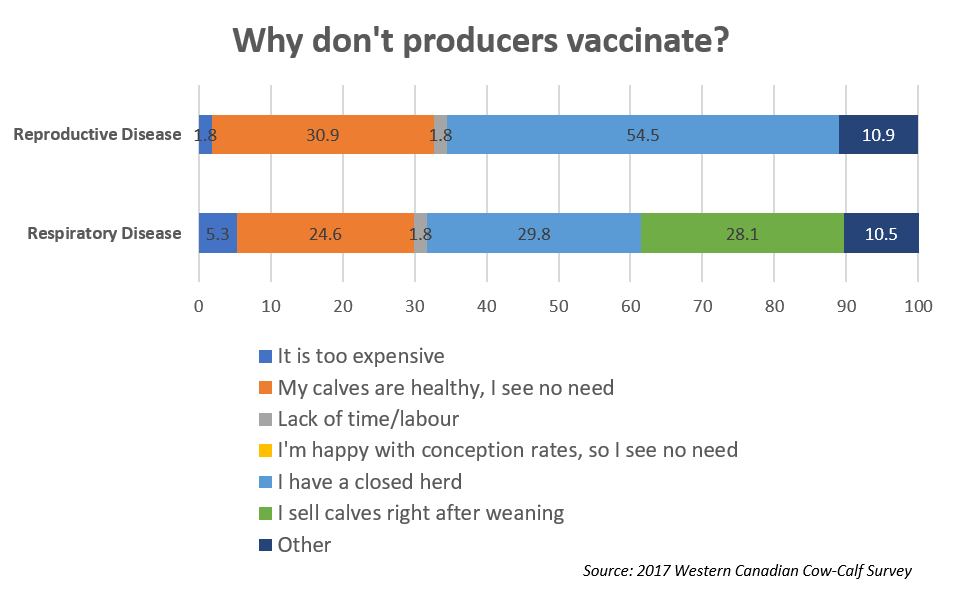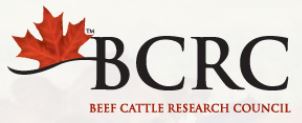



Think You Have A Closed Herd? Think Again.
A surprising proportion of producers believe they run a closed herd.The 2017 Western Canadian Cow-Calf Survey requested reasons why certain management practices were not employed on individual operations. Out of the approximately 25% of respondents who did not vaccinate their cows and heifers against reproductive diseases such as IBR and BVD, over half of those reported that their reason for forgoing those vaccinations was because they had a closed herd. Similarly, over 20% of respondents did not vaccinate their calves against respiratory disease (BRD), and 30% of those indicated having a closed herd was their main reason for not vaccinating.
This high rate of mistaken belief in having a closed herd is not just a Canadian phenomenon. A 2019 UK survey of almost 1000 producers indicated that over half of those who stated they ran a closed herd had purchased cattle within the past two years.
According to the US Department of Agriculture’s National Animal Health Monitoring System (NAHMS) 2007-08 survey, over 88% of operations with 50 head or more brought new cattle onto their operations in the past three years. Often a closed herd is simply interpreted as just being closed genetically, where replacements and clean up bulls are all home raised, artificial insemination is the main breeding method if new genetics are desired, and non-home raised cattle never enter the operation. But like most things, it’s a little more complicated than that.
A truly closed herd will not only eliminate the introduction of non-home raised cattle, but also eliminate as many sources of disease transmission as possible. A closed herd will have no contact (even fenceline) with any other livestock or wildlife and will limit visitor/service provider access to areas where cattle are never present.
In a closed herd, non-home raised animals (even horses, dogs) never set foot on the ranch and any animal that leaves home never comes back. All personnel, visitors, and service providers are following extraordinarily strict biosecurity measures – almost exactly like those implemented in the swine and poultry industries.
You either have a closed herd or you don’t. Just like there is no such thing as “sort of pregnant,” there is no such thing as a “pretty closed herd,” or a “mostly closed herd.” Those herds are open.
While a closed herd is optimal from a biosecurity standpoint because it’s difficult to introduce disease to a completely isolated population, it certainly doesn’t mean you are home free as far as vaccination is concerned.
Let’s face it, fences break, gates get left open, and some cattle just seem bound and determined to end up places they’re not supposed to be. This can be devastating in a naïve herd that hasn’t been exposed to disease through prior exposure or vaccination.
Closed herds are often tricky to maintain in practice, being more labour and cost intensive, and they may also carry certain risks of amplifying recessive genetic conditions or reducing productivity through inbreeding if not managed carefully.
Have you:
- Bought replacement open or bred heifers? Bred or open cows? Pairs?
- Bought an orphan calf?
- Bought a nurse cow?
- Bought or leased bulls?
- Bought or borrowed colostrum?
- Used clean-up bulls you didn’t raise after AI season?
- Calved out some of the neighbour’s cows on your place, with your cows?
- Bought feeder or backgrounder cattle that could potentially mingle, even accidentally, with the main herd?
- Taken cattle, sheep or horses to a show and turned them out with the herd immediately after coming home?
- Utilized a community pasture, shared a grazing lease or other pasture with other producers?
- Shared fencelines with a neighbour? Water sources?
- Taken an animal to a vet clinic and brought it back home only to immediately turn it out with the other cattle after treatment?
- Shared a trailer? Had someone haul cattle for you without a thorough cleaning and disinfection of their trailer? Hauled cattle for someone without a thorough cleaning and disinfection of your trailer?
- Had an unsold animal returned to your place from an auction market or consignment sale?
- Had an animal jump the fence, or a neighbour’s animal end up on your place?
- Had a herd of deer, elk or other wildlife in with your cattle? In your feed storage areas?
- Mingled different types of livestock in the same area (e.g. cows and sheep)?
- Used your own horses at a neighbour’s branding or roundup, brought them back home, and turned them out with the cattle? Allowed neighbours to use their horses at your branding/roundup?
- Allowed service providers (vets, nutritionists, feed trucks, etc.) or oil and gas traffic access to your operation without a full disinfection protocol?
- Purchased used equipment and operated it without thoroughly disinfecting it?
- Hosted a branding or get together at your place without a clothes change & boot disinfection protocol?
- Toured visitors through your herd without a clothes change & boot disinfection protocol?
- Visited another farm, auction market, show, sale or other event where cattle are present without a clothes change & boot disinfection protocol once you got back home?
If you answered yes to any of these questions, you do not have a closed herd. It is open.
Even without running a closed herd, there are easy and practical things producers can do to limit the risk of disease spread. Vaccination and implementing basic biosecurity protocols (e.g. quarantines, boot washes, etc.) are the most important of these.
Production surveys across Canada indicate that bulls are an under-vaccinated class of cattle, with only about 50% of bulls receiving any vaccinations. More attention should be focused on keeping bull vaccinations current.



